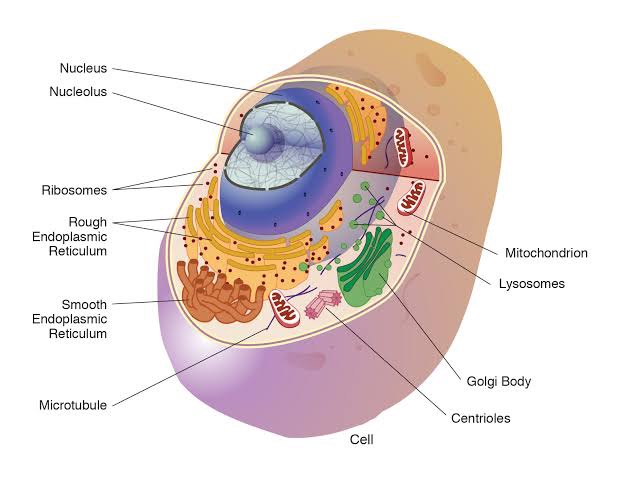One of the smallest components of every complex life form are cells. Some cells are even a life form in itself, functioning on its own to keep itself alive. In more complex organisms, the cell works with other cells in the body to allow it to function. Each cell can be specialised (having a specific role) or unspecialised. The role of a specialised cell is usually determined by the genetic material that is activated within its nucleus. For now, since I want to keep it bite sized, I’ll only be going into the basic of a cell.
Types of Cells:
There are two types of cells, eukaryotic and prokaryotic. Eukaryotic cells contain organelles (structures that have a function) that are surrounded by a membrane, as well as having its DNA within a nucleus. Prokaryotic cells have free floating DNA and no membrane bound organelles.

Types of Eukaryotes:
There are a number of types of eukaryotes and some examples include:
- Animal cells.
- Fungus.
- Plant cells.
- Protozoa.
Types of Prokaryotes:
This list is much smaller consisting of: bacteria and archaea.
Keeping it All Together:
All cells contain something called a plasma membrane or cell membrane. This is made up of a phospholipid bilayer, which looks like this:

The lipid (fatty acid) contains a hydrophilic head (water loving) and a hydrophobic tail (water hating). With this, it functions to regulate what comes in and out of the cell.
Plant cells and most bacteria differ because they have a cell wall, functioning to give the cell structure.
The Organelles and their Functions:

A typical cell has many organelles with differing functions. It works like any city, each organelle functions to complement each other, allowing the cell to function.
- Nucleus – controls and regulates the activities within the cell.
- Nucleolus – is responsible for producing the cells ribosomes.
- Ribosomes – decodes DNA and creates proteins.
- Rough ER (endoplasmic reticulum) – this ER produces proteins that allow the cell to function, so it’s not for use outside of the sell.
- Smooth ER – synthesises lipids and steroids.
- Microtubule – responsible for movements within the cell. It can be thought of as the cells skeletal system.
- Centrioles – organise microtubules.
- Golgi body or apparatus – packages proteins and lipids that will be exported from the cell.
- Lysosomes – allows the cell to commit suicide. It contains digestive enzymes.
- Mitochondria – I’m sure most of you have heard that it’s the powerhouse of the cell. It creates energy by breaking down glucose to produce ATP.
Thanks for reading!